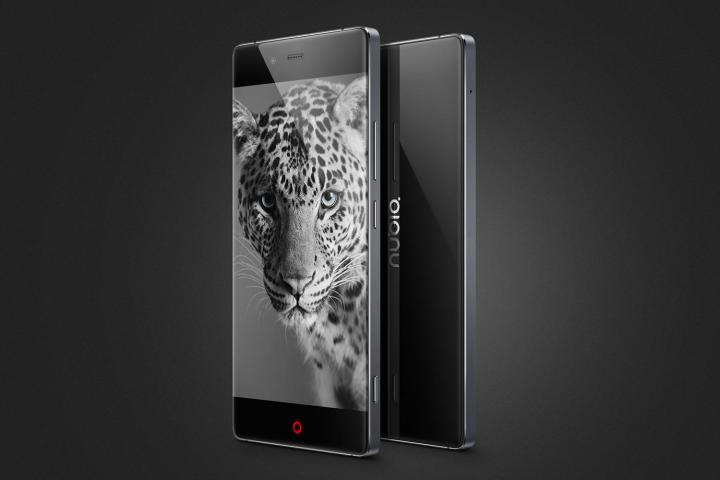
As Apple’s infamous Antennagate fiasco taught us, snatching radio waves out of thin air to transmit thousands of messages a second over miles and miles is not quite that simple. Just as poor antenna design (or an errant hand) can ruin reception, “tuning” an antenna just right can significantly improve reception, lowering power consumption in the process and extending battery life.
How fortuitous, then, that an amazing new gadget can better tune your phone’s antenna to achieve all of those things. It could even be in your phone right now, or your next one. However, its battery-extending benefits may never be realized, because phone companies don’t want them.
A smarter antenna
Before you can understand why, it helps to understand how antenna tuning works.
An antenna’s size corresponds directly to the radio frequency it’s designed to receive. An FM radio antenna, for instance, needs to be longer than a Wi-Fi antenna. But since a phone sold globally must support up to 40 different frequency bands, optimizing for all of them is impossible. Unless you can adjust the antenna on the fly to match frequencies as they change, it’s impossible to have the best antenna for your phone in every single situation.
A phone sold globally must support up to 40 different frequency bands, optimizing for all of them is impossible.
The SmarTune antenna from the Dutch firm Cavendish Kinetics replaces less efficient antenna tuners that aren’t up to the job. It uses a special capacitor to perfectly match the “electrical length” of antenna to the required frequency, boosting an antenna’s gain by 3db. Ignoring the tech talk, in real terms, that’s doubling its ability to grab a signal, and is the equivalent of extending the antenna outside the body of the device, just like on the earliest mobile phones.
It took Cavendish eight years to perfect the design, but it’s now cheap enough to sell on a mass scale, and ultrareliable. There are moving parts inside, but it has been tested to 100 billion cycles, which is the equivalent of it being used once a second for the next 3,000 years.
More than just more bars
If a manufacturer uses the Cavendish tuner and gets that 3db gain, base stations give the phone priority when connecting due to the strong signal, which means a stronger, faster connection. In turn, every component required to drive a phone — from finding a signal, to activating and running the modem, to using the chip to process incoming data — works for a shorter amount of time. According to Lars Johnsson, VP of Product Marketing for Cavendish Kinetics, that could result in up to 45-percent power savings, due to components not having to be active for so long.
Of course, Johnsson was quick to point out that when we are given more power, data, and signal, we tend to use our phones more, and that will affect the overall, real-world gains. However, no one is going to complain that they’re able to do more on their phones without suffering greater battery power consumption, so it’s a win-win. Plus, a tuned antenna will also provide a more reliable connection.
So you get more signal, optimum data speeds, and improved battery life. It’s completely reliable, and doesn’t cost any more than existing, less-efficient alternatives. So why isn’t in our phones?
We can’t have nice things, because we want nice-looking things
Frustratingly, it is, but you would never know it.
ZTE’s Nubia brand is already onboard with Cavendish, and the SmarTune antenna can be found in the recently announced Nubia Z9, and in seven other phones from ZTE and other companies that are commercially available in China. Cavendish expects to see its tuners in 20 different phones on sale before the end of the year. While we’ve seen the Z9’s battery and signal strength is above average in our early tests, it hasn’t stood out as being something special. Does that mean it doesn’t really work?
It works fine, but the benefits aren’t filtering down to us in the way we expect because of what Johnsson describes as “engineering tradeoffs.” Manufacturers are using the gains seen from fitting the Cavendish tuner in a different way. Rather than turbocharge the reception and lower power consumption, the 3db gain is used to make the antenna much smaller than usual, which in turn lets them make thinner phones.

The Z9’s almost bezel-free screen is a by-product of this, because the smaller antenna can be shifted into a new position inside the phone. This results in a striking design, but an antenna that provides about the same signal strength, without any of the battery or connection benefits that the tuner could provide.
“Designers have the technology to be able to improve user aspects of a phone, but marketing priorities today are all about the look and feel,” Johnsson explained.
Choosing between battery and design
Cavendish is confident about its technology, but will it continue to find its way into new phones?
“We launched commercially last September,” Johnsson told me, “And manufacturers needed convincing that the new component technology is reliable. This has been removed as a concern. The first customer launch has really brought us attention, and we’re talking to pretty much every smartphone maker now.”
However, even if it does become almost ubiquitous, what will it mean to you and me? “The technology is there for faster data speeds and better battery life,” Johnsson told us, before adding, “If manufacturers choose to use it in that way.”
If the way Cavendish’s tuner is being used right now is any indication, it seems unlikely that many, if any, will choose battery over design.





